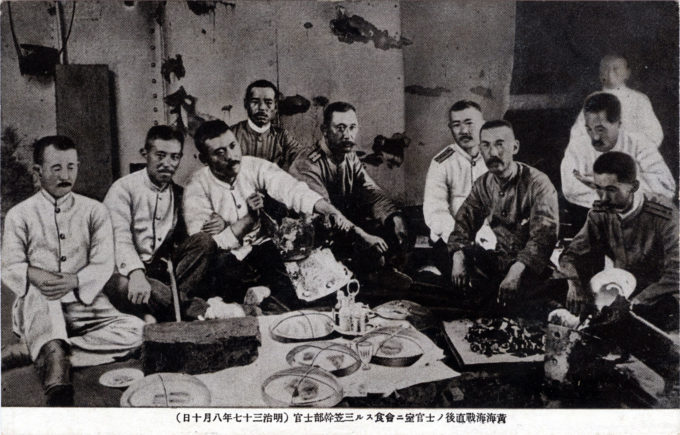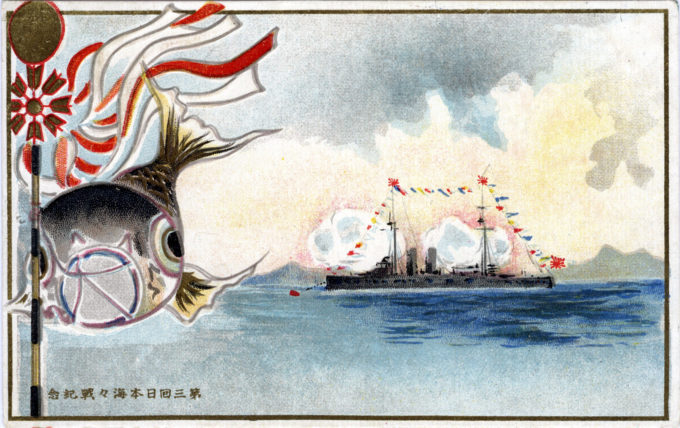
Officer’s mess, Battleship Mikasa, ca. 1906, captioned “Mikasa officers eating in the officer’s room right after the sea battle.” Curry was introduced to Japan during the Meiji era (1868–1912) from India by the British, at a time when India was under the colonial rule of the British Raj and when, after 1870, an imperial decree by Emperor Meiji determined that Britain’s Royal Navy should be the model for development of the Imperial Japanese Navy (IJN). So it became that the IJN were first in the nation to adopt curry, ostensibly to prevent beriberi, and curry became the standard meal, too, on the IJN (and, now, the JMSDF) vessels at-sea on Fridays – as a way to calibrate the able seamen after being days at sea without horizon or calendar.
See also:
IJN Battleship Mikasa, c. 1910
“The story of curry is emblematic of the early days of colonialism, and the beginnings of what we now simply refer to as globalization. Academics claim that people may have been eating curries as far back as 2,500 B.C., and that it has addictive properties.
“The roots of the word ‘curry’ are undecided, with some arguing that it comes from the Old English word ‘cury,’ first used in an English cookbook published in 1390. Ostensibly, ‘cury’ referred to cuisine based on French cuire cooking — meaning to cook, boil or grill. The word gradually became associated with a stew.
“In 1810, Sake Dean Mahomet opened Britain’s first curry house, the Hindustan Coffee House. It was a massive failure, but in the years that followed, curry as an English dish re-emerged in restaurants across the United Kingdom. Curry gradually became an accepted part of every British pub menu, perhaps offering balance to an otherwise lackluster English diet.
“Anglicized interpretations of Indian cuisines were subsequently taken to Imperial Japan via the Anglo-Indian officers of the Royal Navy and other British subjects in the latter half of the 19th century. By the end of the century, the Japanese navy had adapted the British version of curry, just as the English had earlier Anglicized Indian curry.
“In 1872, the first karē raisu recipe was published in a Japanese cookbook, and in 1877 a Tokyo restaurant first offered karē raisu on the menu. Just as it had done in England, curry rapidly became a staple of the Japanese diet. Today, Friday nights onboard the vessels of the Japanese navy are still curry nights.”
– “From India To North Korea, Via Japan: Curry’s Global Journey“, NPR, April 8, 2016


